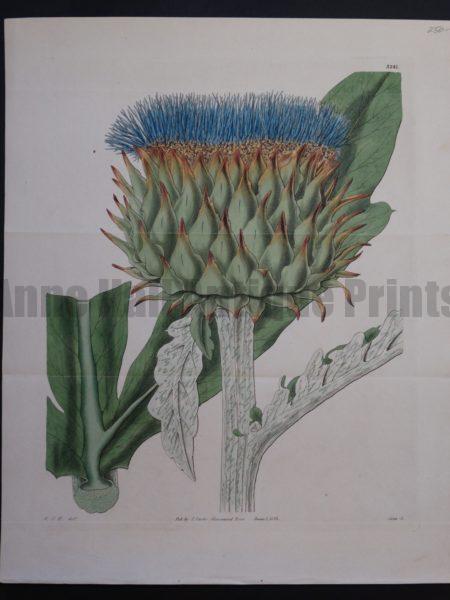Our Protea & Proteaceae are antique engravings, over 100 years old. Family Proteaceae is 300 million years old & grows naturally in the Southern Hemisphere. Here’s the way they were documented, in print, throughout history. We are highly specialized antiques dealers, of paper, of many kinds of botany & flora, found throughout the world, which were recorded throughout history.
Learn More About Botanical Magazine, by Curtis Sydenham Edwards & Others

Family Proteaceae Genus Protea: Botanical Magazine c.1800
Values & Order
Illustrated for the Botanical Magazine from 1787-1820, these original copper plate engravings have original water coloring. People were fascinated with these large flowering plants which were found growing naturally in the Southern Hemisphere. At some 300 million years of age, the hardy family of Proteaceae are still some of the most dramatic flowers found on the planet.
Ask to be on a waitlist for Protea.
Our collection of Protea antique botanical engravings, are sold individually or in sets. Each piece measures 6×9 1/2″ Call Anne at 413-245-4197 to place your order or email: anne@annehallantiqueprints.com Many are available. Quoted are approximate valuations, based on excellent condition.
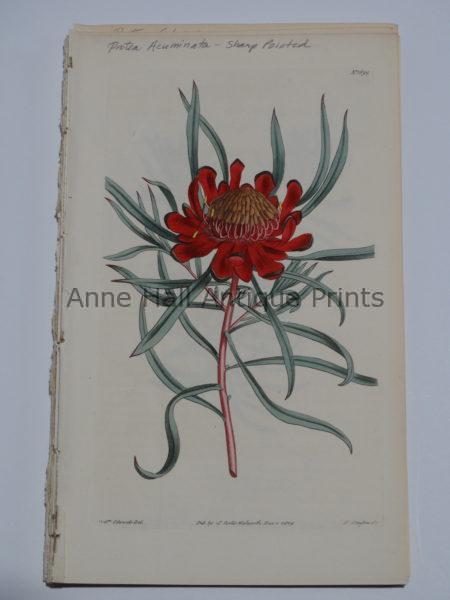
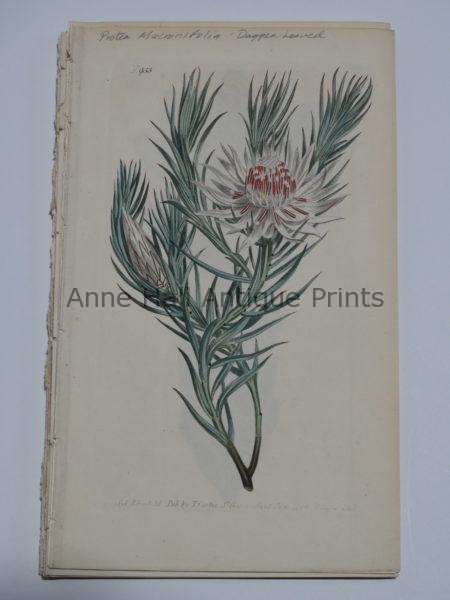
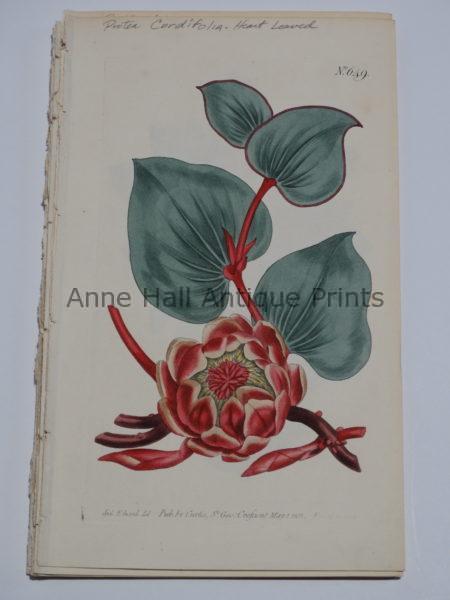

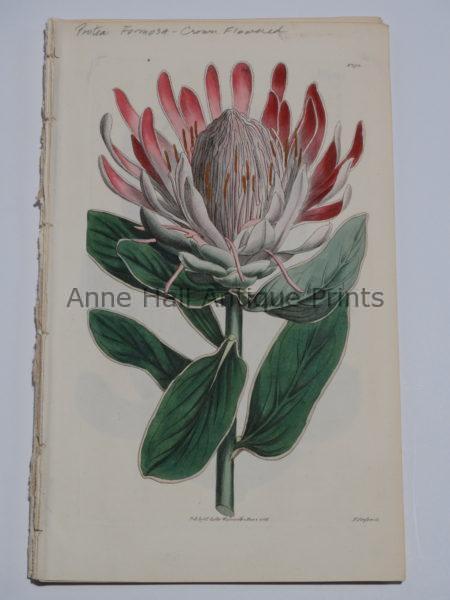
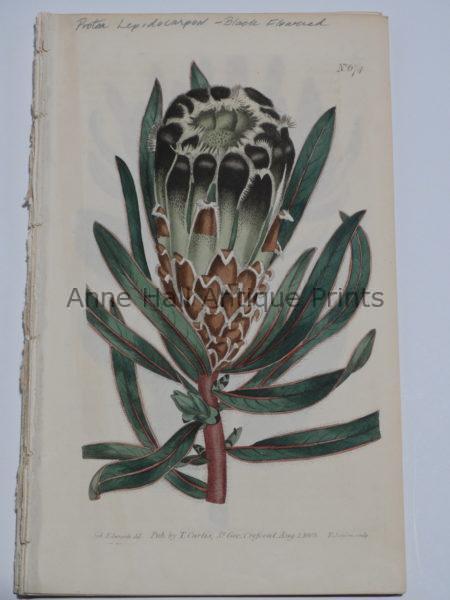

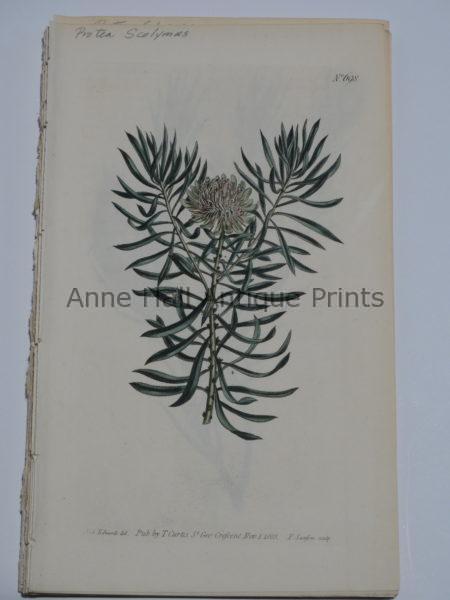
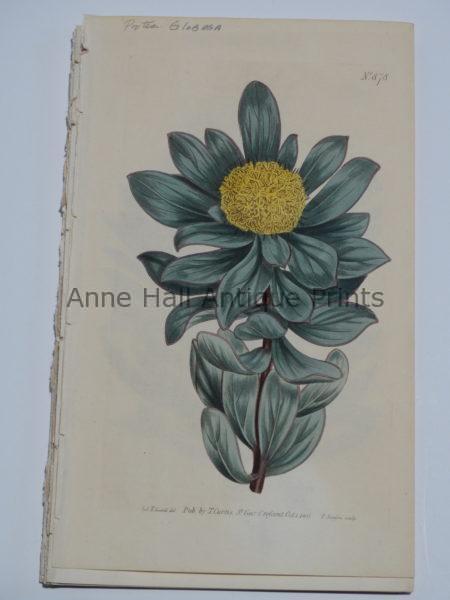
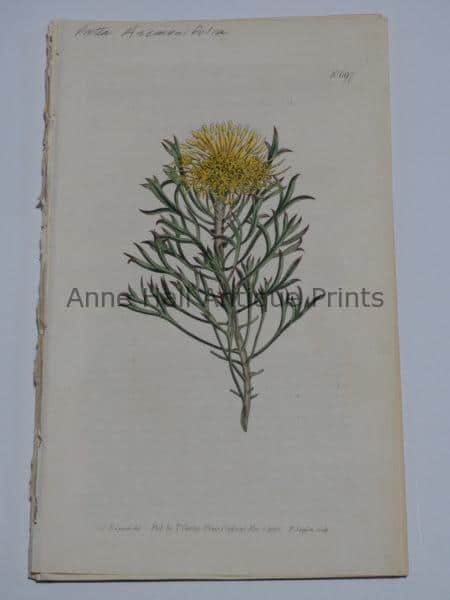
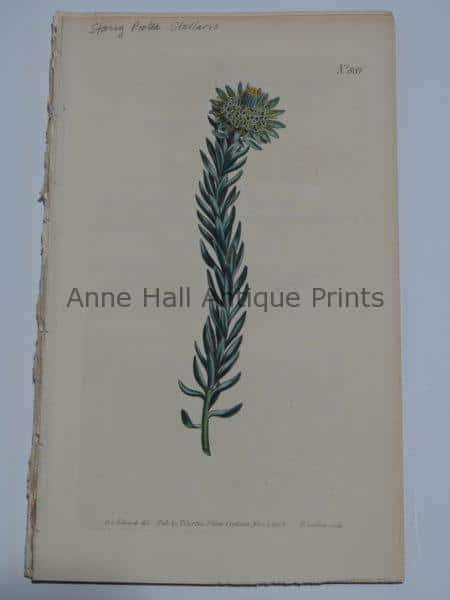
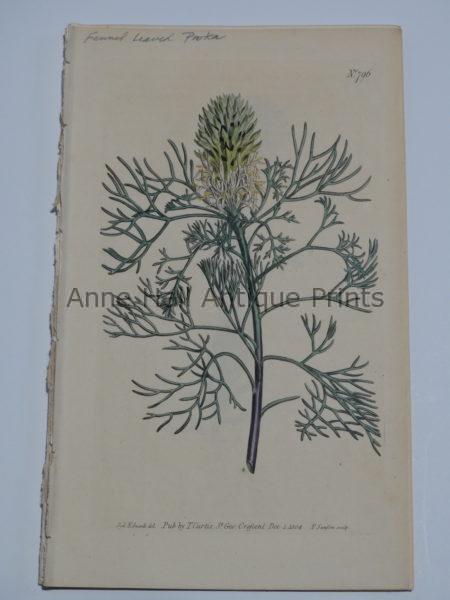

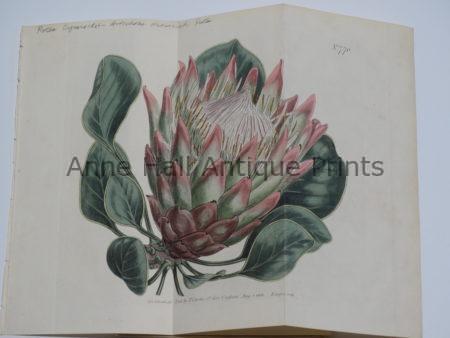
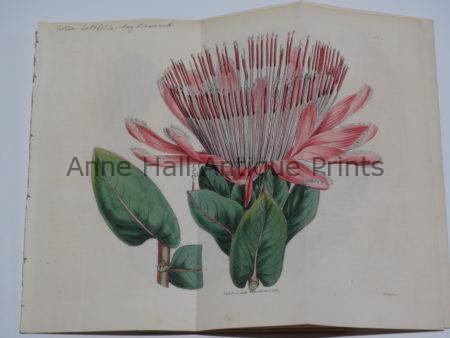
William Curtis established, authored and published an early English periodical named Botanical Magazine in February 1787. He created demand and ran the magazine until 1800. His leadership was followed by foe John Simms 1800-1826, William Jackson Hooker 1827-1865, and Joseph Dalton Hooker from 1865 to 1904. Many artists worked on the publication. They were Sydenham Edwards, William Graves, James Sowerby, John Curtis, William Jackson Hooker, W.H. Fitch, Matilda Smith, Lillian Snelling and Stella Rose Craig. Botanical Magazine was very popular. The watercolors, which were applied to the copper plate engravings, brought the magazine to life. Lots of subscriptions were sold as it was affordable. Subscribers collected issues. Which were generally catalogued chronologically and bound by the year. The art work is copper plate engraving through Volume 70. (After that stone then zinc lithography took over. Lastly, photomechanical color printing ended Botanical Magazine’s life. It ran nearly 160 years.
The artist and illustrator responsible for most of the plates in Botanical Magazine was Sydenham Edwards. English, he lived 1768-1819. He was the first full time artist to work for the magazine. William Curtis had seen Edwards artwork and sought to hire him. Soon Edwards the apprentice and William Curtis became an inseparable friends. They took many expeditions and created the beautiful artwork you are seeing here today. Edwards was the only artist until 1815. After about 13 years of building the establishment, Curtis left Botanical Magazine. He and James Ridgeway, set up a new magazine called The Botanical Register. Which was less prolific and most likely more expensive to subscribe. The work is even more detailed and has more intense watercolors.
Beautiful artichoke protea engravings from the 18th-19th centuries.
You have found beautiful English artichoke artwork from previous centuries. A 1772 John Hill Vegetable System, hand colored engraving illustrating the development and stages in growing and growth of artichokes. An original watercolor engraving by a revolutionary woman, Elizabeth Blackwell for her Curious Herbal. A striking and revered depiction of the plant in natural surroundings by Dr. Thornton for his Temple of Flora.
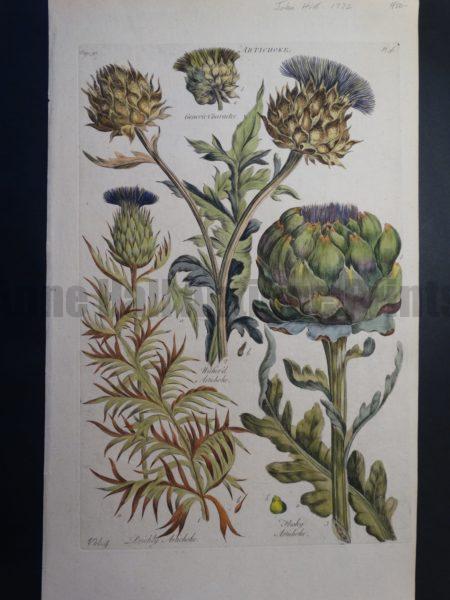

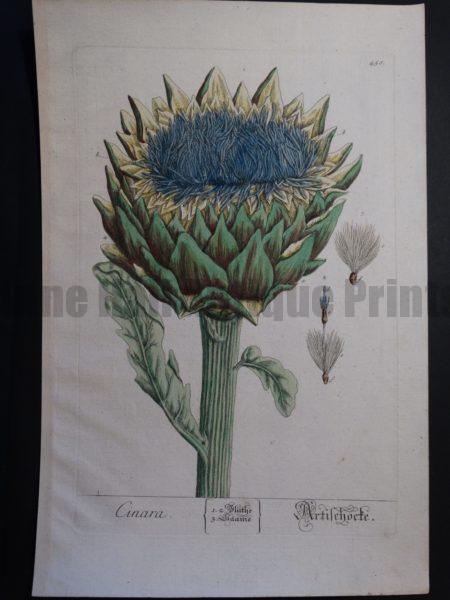
Available $600.
Rare Antique Protea Flower Engravings, Henry Andrews c.1820
Protea Engravings by Henry Charles Andrews for The Botanist’s Repository for New and Rare Plants. These protea are antique botanical engravings. Published about 200 years ago for encyclopedias if you will, or libraries of botany. They were the rage in the 1800’s. It was an age of discovery and recording nature.
Henry Charles Andrews was a botanist and illustrated this work with magnificent hand colored engravings. English water colored copper plate engravings on hand made rag paper. Each old engraving measures @ 8 1/4 x 11″. Bright watercolors. Very good condition. Valuation prices as noted.
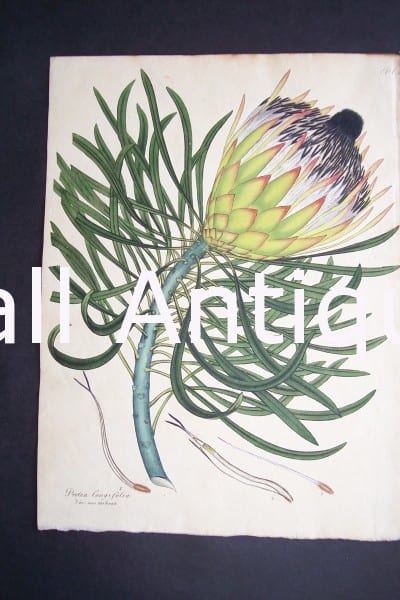

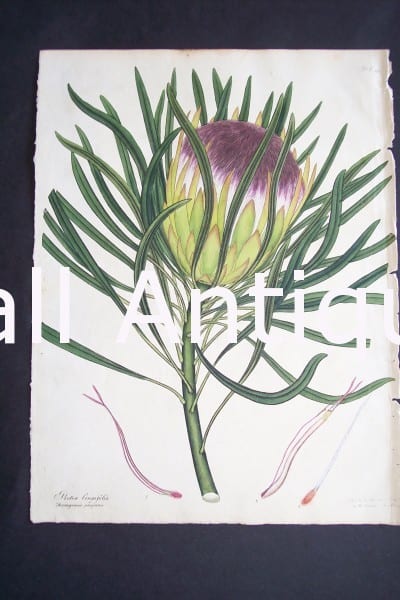

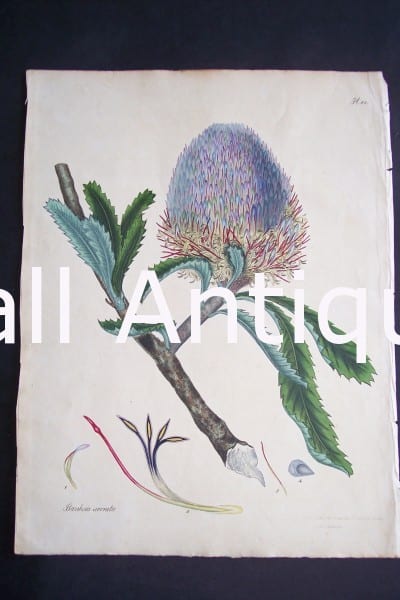
It was an incredible endeavor to publish these antique prints:
An incredible laborious endeavor of all those involved in producing something like these antique flower engravings of Protea by Henry Andrews & Curtis. First one had to find and identify each of the species known at the time was an expedition. Artists sketching, painting, recording every detail. Writing the text. Finding a publisher .Publishing a reliable and comprehensive book complete with fine illustrations was no easy task. The illustrations had to be meticulously drawn, with the best accuracy. The image would be transferred onto a copper plate and engraved with engraver’s tools called burins.
The paper was hard to acquire, it had to be made by a paper maker, a lifetime career, and the engraver would have to re engrave another plate after just 300 strikes or struck by the printing press. Then there was the color. Which applied by hand with watercolors. The water colorists, frequently young women due to their excellent eyesight, would die at young ages. Due to licking the tips of their toxic paint brushes.
Yet these old prints still exist centuries later, in fine condition. Which is due to the high quality of the rag sheets or paper to which the engraving struck. Paper was made of rag right up through the turn of the 20th Century. Coming from linen, flax and literally rag cloths. Centuries ago, paper was not made from trees. Rag has no acid. The high acidity in trees results in a short life for paper made from trees. Kept in a good environment, antique prints on rag paper can last for many centuries.

Feel free to contact us. Phone: 413-245-4197 or Email: anne@annehallantiqueprints.com Thank you for visiting my website! Read some interesting facts about Protea. See our Cacti & Succulents. Find an array of very early botanicals. Want to buy a cacti print with a click?
